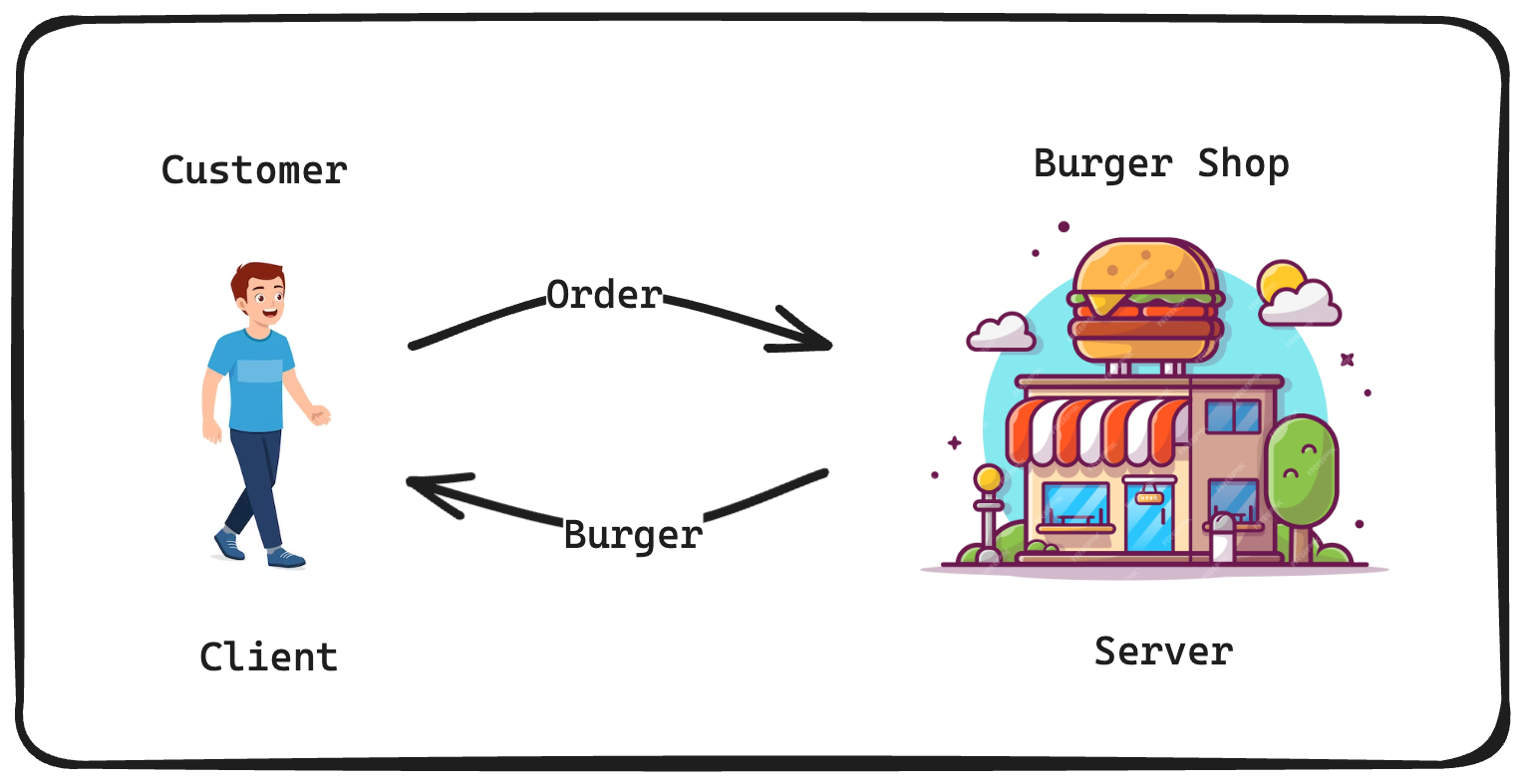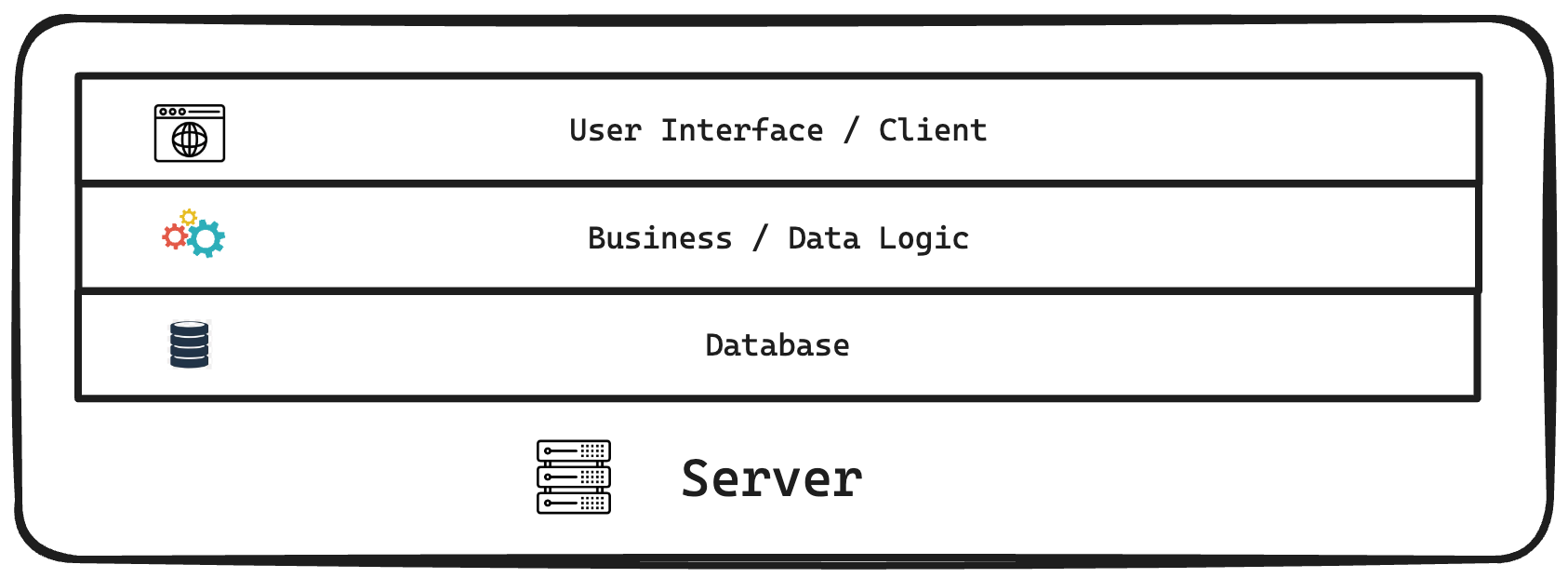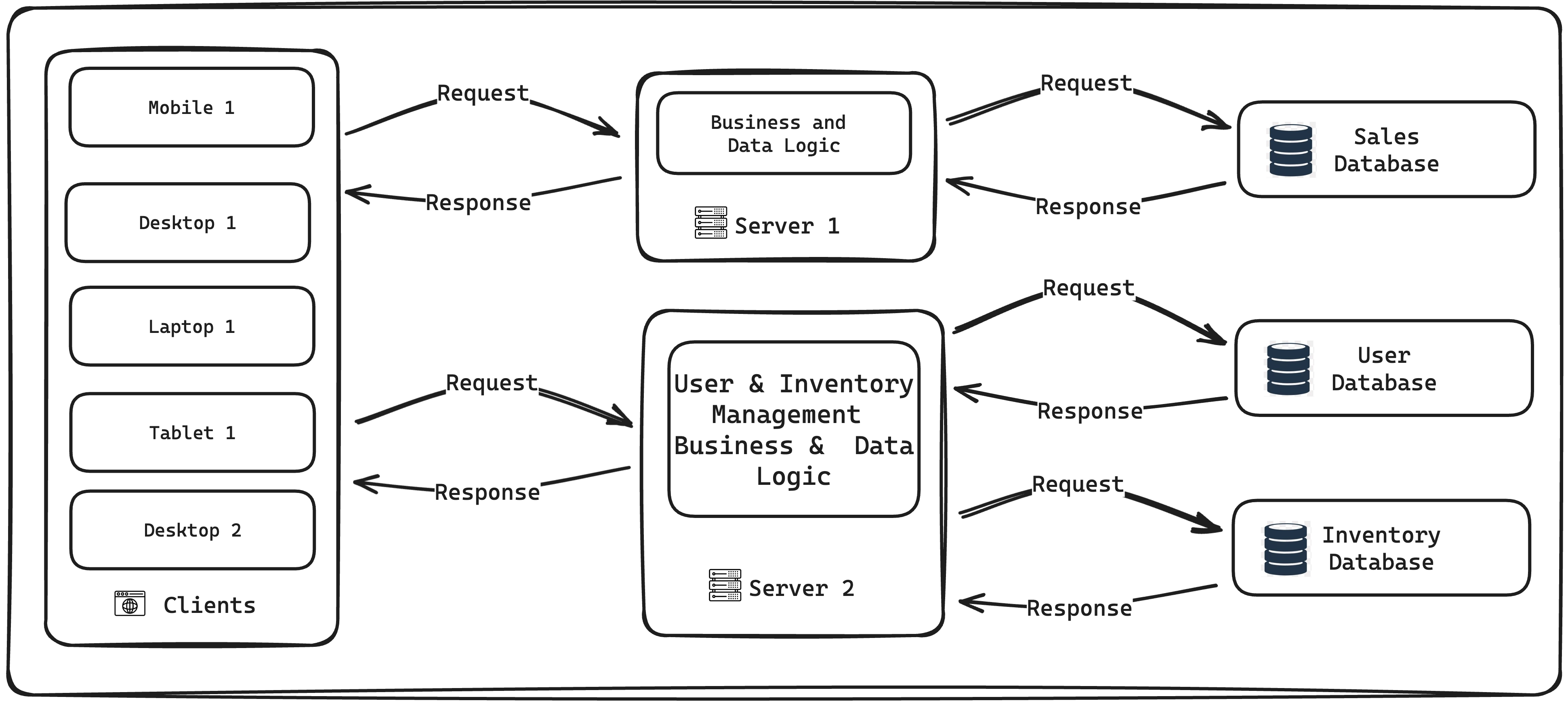Client Server Architecture
 Ritesh Mukim
Ritesh MukimTable of contents

Let's start with understanding what the individual terms Client 👨🏻 and Server 🗄️ mean by taking a simple example of a Burger Shop 🍔.
Suppose, there is a burger shop near your house, where you can go, order a burger, and eat it.

Here, the burger shop is the Server and you, the customer, are the Client. In simple terms, one providing any service is a Server and one requesting the service is a Client.
Similarly, in the computing world, mobile phones, tablets, laptops, desktops, etc. are all known as Client, which requests different services from Servers situated across the world.
Types of Client-Server Architecture
1-Tier Architecture
A system, similar to the Burger shop mentioned above, where all the requests are served by the shopkeeper, like ordering, preparing, packing, and serving.
All the business logic, data logic, and database resides in a single system, hence, the term 1-tier architecture.
2-Tier Architecture
A system similar to the Burger shop mentioned above. Still, with a separate kitchen, where the orders are taken and are served by a waiter, preparation and packing are done separately by the kitchen.
All the business and data logic resides in one system and the database resides in another system, hence, the term 2-tier architecture.
3-Tier Architecture
A system similar to 2-tier, but with a separate accounts/cashier, where the orders are taken and are served by a waiter, billing is done by the cashier, and the preparation and packing are done separately by the kitchen.
User Interface resides in one system, all the business and data logic resides in another system and database resides in another system, hence, the term 3-tier architecture.
N-Tier Architecture
A system is also known as multi-tier architecture because it consists of multiple tiers of systems that handle different functions. Such as, when there is a separate section for ordering, separate sections for preparing items like burgers, fries, coke, etc., then a separate section for packaging and one for serving.
Similarly, there can be different types of User Interfaces/Clients, like mobiles, desktops, etc., different systems for the business and data logic, like payments, user management, content management, and different kinds of databases can be used, hence, the term N-tier architecture.

I hope this blog helps you to understand the topic.
Note: This is my first blog 😇
Subscribe to my newsletter
Read articles from Ritesh Mukim directly inside your inbox. Subscribe to the newsletter, and don't miss out.
Written by

Ritesh Mukim
Ritesh Mukim
I am a Software developer with a niche in frontend development and UI/UX design